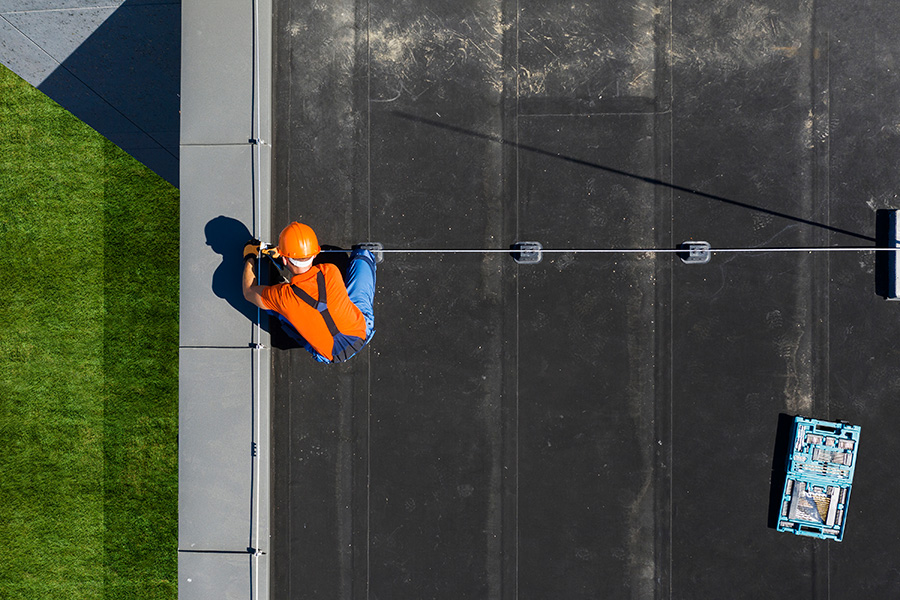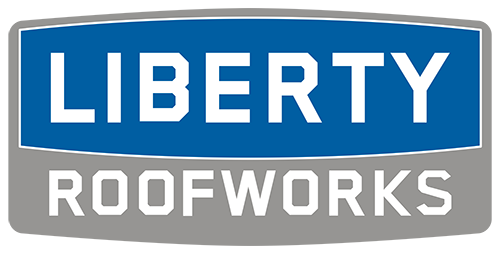TPO Costs – Creating Your Roofing Budget
Thermoplastic polyolefin (TPO) is a rubber roofing material for commercial buildings since it is reasonably affordable. TPO comes in rolls held together by seams glued together with heat. The recycled rubber material makes it a popular choice for most roofs today.
It’s crucial to understand that flat roofs or those with a low pitch are the best options for TPO.
If you want to install one at home, you can compare it to other rubber roofing types to ensure you make the right choice. This roofing style has some benefits and drawbacks, and knowing this can be highly cost-effective.
The article will cover the typical TPO roofing and material costs, including other things necessary to help you create a budget.

Contact Us Today
Have skilled roofers at Liberty Roofworks provide you with roofing services in Columbia, SC. We provide a free roof inspection and estimate for your convenience.
Liberty Roofworks
1397 Cilantro Ct.,
Tega Cay SC 29708
Monday-Friday | 8am-5pm
(704) 463-8177
How Much Does TPO Roofing Cost?
Like most types of roofing, TPO is frequently priced per square though the material comes in rolls. You measure the estimates for TPO costs by 100 square feet of roofing material each.
According to experts, TPO costs between $3.50 and $14.00 per square foot. The varying thickness options for TPO roofing reflect the vast range of prices.
Why Should You Choose TPO Roofing?
Before deciding to proceed with this type of roofing, there are several factors to consider. An example is that TPO roofing is comparatively inexpensive per square foot. Other benefits and downsides of TPO roofing are listed below:
Pros
- Reflective materials reduce energy costs.
- TPO costs reduce with installation difficulty.
- Minimal upkeep is necessary.
- The recyclable materials make it environmentally sustainable.
- TPO is not heavy.
Cons
- Not the prettiest kind of roofing.
- The heat adhesion process for the seams makes it necessary to install the roof only in dry conditions.
- Material quality varies between manufacturers and affects the pricing of TPO roofing materials.
 TPO Roofing Cost Factors
TPO Roofing Cost Factors
The causes of a rise in overall TPO costs differ. You might occasionally pay more to get the best materials and labor for your TPO roof.
However, knowing the information below in advance, you may be able to avoid excessive expenditure for a job.
How Thick Is the Insulation?
As standard insulation, several contractors will use a half-inch fiberboard. Board made of fiber has extremely little insulation value. It will cost you a hefty fortune to have insulation for a flat roof.
Insulation made of PolyISO rigid foam measuring one-inch thick costs $45–$50 per 100 square feet. Therefore, if you require an 18 R-value, three inches of ISO will be necessary, costing between $135 and $150 for every 100 square feet.
Due to the high cost of the ISO board, there is sadly no solution to lower this expense.
Curbs and Penetrations
Roof penetration delays installation and necessitates more materials and flashing. The contractor must make up for increased material costs and lost productivity.
Simple pipe flashings are less expensive and easy to handle. You should expect a $50 price tag for each pipe flashing.
You could expect to pay between $180 and $250 for drains. These are necessary on most flat roofs but need an expensive assembly.
Presence of an Old Roof
The old roof must be removed before installing the new TPO membrane. You will spend between $0.75 and $3.00 per square foot to have the old material removed, depending on its type and how many layers there are.
Among river rock ballast, BUR, gravel and tar ballast, and rubber, the last is the easiest to dispose of.
Plywood Replacement
Sometimes you discover rotten or damaged plywood boards under the old covering. You will have to change the old roof before fixing a new one. Each 4 x 8 piece of plywood will cost between $75 and $90.
The Thickness of the TPO Membrane and Color
Depending on the thickness of the TPO membrane you choose, your overall cost will vary significantly. This includes 45 inches (budget), 60 inches (mid-range), and 80 inches (premium).
Improved UV protection, better longevity, and improved puncture resistance are all benefits of using a thicker TPO roofing material which is more expensive.
Any color other than white will cost extra. The choices are also very constrained. Furthermore, the usual hues that don’t cost more are white, grey, and tan.
Labor
TPO roofing is expensive because it is a special flat roof material. As a result, it requires tools, installation expertise, and training.
Due to the lack of professionals for this work, installation costs are kept high. Since most installations are for commercial use, this is particularly true in the home sector. As a result, those who do usually charge more than standard roofers.
Commercial professionals frequently employ highly compensated non-union or union personnel. To cut expenses, residential contractors often use less-skilled workers.
Location
Local contractor labor costs can differ significantly.
You might anticipate paying more for the same installation if you reside in a high-income city than if you reside in a tiny town.
Getting an estimate from a local TPO roofing contractor is far better than the prices you find online. Don’t be shocked when you see this.
Cost of TPO Roofing Materials
TPO roofing needs more than just the installation material. Additionally, you’ll need to buy insulation, which goes beneath the roof.
Usually, the price per square foot for insulation is between $1.50 and $3.50. Additionally, the flashing stops water from gathering beneath the roof and attachment system.
Insulation
Depending on the type and thickness you select, the insulation costs may occasionally be greater than the cost of TPO roofing. However, in most circumstances, rubber roofing insulation costs between $1.50 and $3.50 for every square foot.
The insulation helps control the temperature of the house or building and serves as a protective underlayment for TPO roofing.
Flashing
Flashing must be done at corners and seams to prevent water from seeping into the inside of the building.
It typically costs between $5 and $50.
Attachment
Your TPO roof must be attached to the top of your building, just like any other roof. There are three ways to do this, and the costs differ for each one:
Ballasted Attachment – Pavers or rocks help to weigh down the roof. 45mil costs between $1.50 and $2.50 per square foot. However, the 65 mil variant costs between $2.00 and $2.50 per square foot.
Fastened Roof – The rubber roof is attached to the underlayment using screws. You’ll pay between $2.00 and $3.00 for this type of attachment, regardless if it’s 45mil or 65mil.
Attached Roof – This method fixes the rubber roof to the underlayment with glue. 45mil costs between $2.75 to $3.50, and 65mil costs between $2.50 and $3.50.
Frequently Asked Questions about TPO Costs
Are There TPO Alternatives?
TPO offers a variety of solutions to flat roof owners. The most widely used type is ethylene propylene diene monomer (EPDM), a synthetic rubber with various uses.
It is typically recognized as a white roof, whereas EPDM is a black roof. Although EPDM may initially be less expensive than TPO, it might not be as economical in terms of energy conservation.
PVC, or polyvinyl chloride, is another popular substitute for TPO. PVC is one of the strongest and most resilient membrane materials, withstanding sun, wind, and high temperatures, which is why property owners pick it for flat roofs.
Is It Okay to Paint a TPO Roof?
TPO roofs are available in a variety of colors to complement the building they are being applied to, with white being the most popular option. The optimum option for these situations is single-coat elastomeric paint for TPO roofing.
You’ll need to inquire with your expert roofing provider about your options in this regard.
Which Is Better EPDM or TPO?
TPO often performs better than EPDM due to the improved dimensional stability when deciding between the two.
Additionally, EPDM has a tendency to shrink, which is bad for your roof over time.
Is TPO Roofing Flame Resistant?
TPO roofing is fairly flame-resistant, however, the adhesives and solvents used during installation may cause problems if exposed to flames directly. The TPO roofing will be successfully flame resistant on your roof if there is a thick insulation layer between it and the substrate.
How Can I Clean a TPO Roof?
The majority of the filth and grime on your TPO roofing may be removed with a typical low-power pressure washer (less than 2,000 PSI).
Use a broom with soft bristles and a mild home cleaner to scrub and restore the bright color and gloss of your roof.
Maintaining the reflecting qualities that make it an excellent insulator from UV rays and the heat of the sun through semi-regular cleaning will aid.
What Is the Weight of a Roll of TPO?
TPO rolls are very weighty. Additionally, the specialized equipment you’ll need for the process is only one of the numerous reasons why expert installation is necessary.
The total weight isn’t excessive given the areas each roll can cover, but it makes positioning TPO rolls a multi-person process.
A roll of 80 mil TPO measuring 10′ by 100′ should weigh approximately 400 and 430 pounds.
Hiring a Professional
Employ a qualified roofing contractor to install or repair your TPO roofs.
Although installing TPO roofing is not particularly difficult, the tools required will make it challenging for the ordinary person to finish it without incurring costs.
On the low end, commercial-grade hot air welders typically cost between $2,000 and $3,000.
Cut TPO costs by hiring these tools or letting a professional contractor with the necessary experience handle it.
